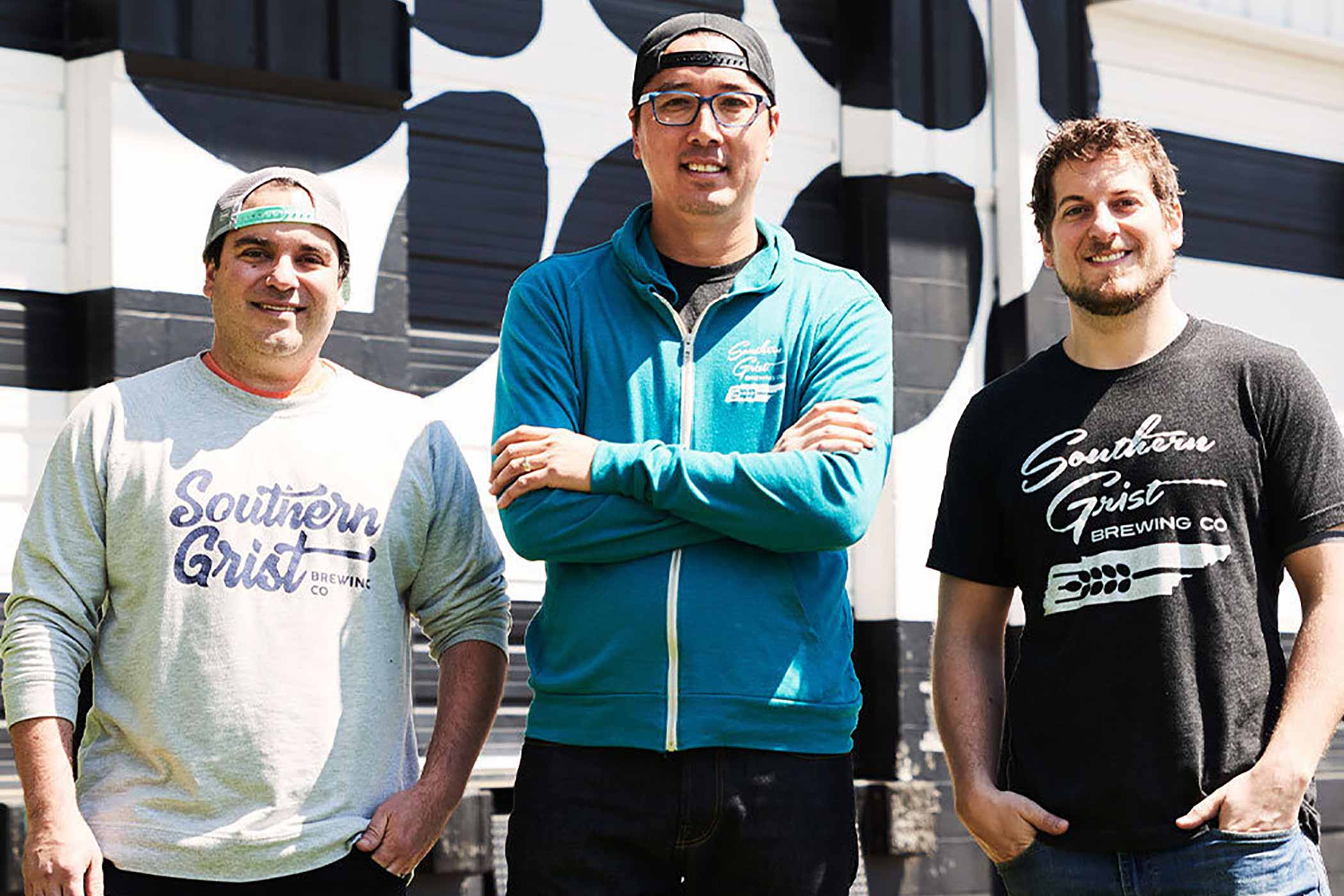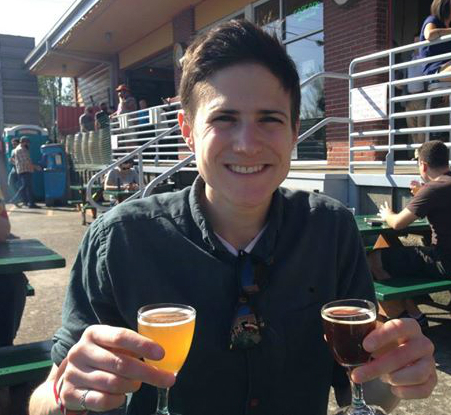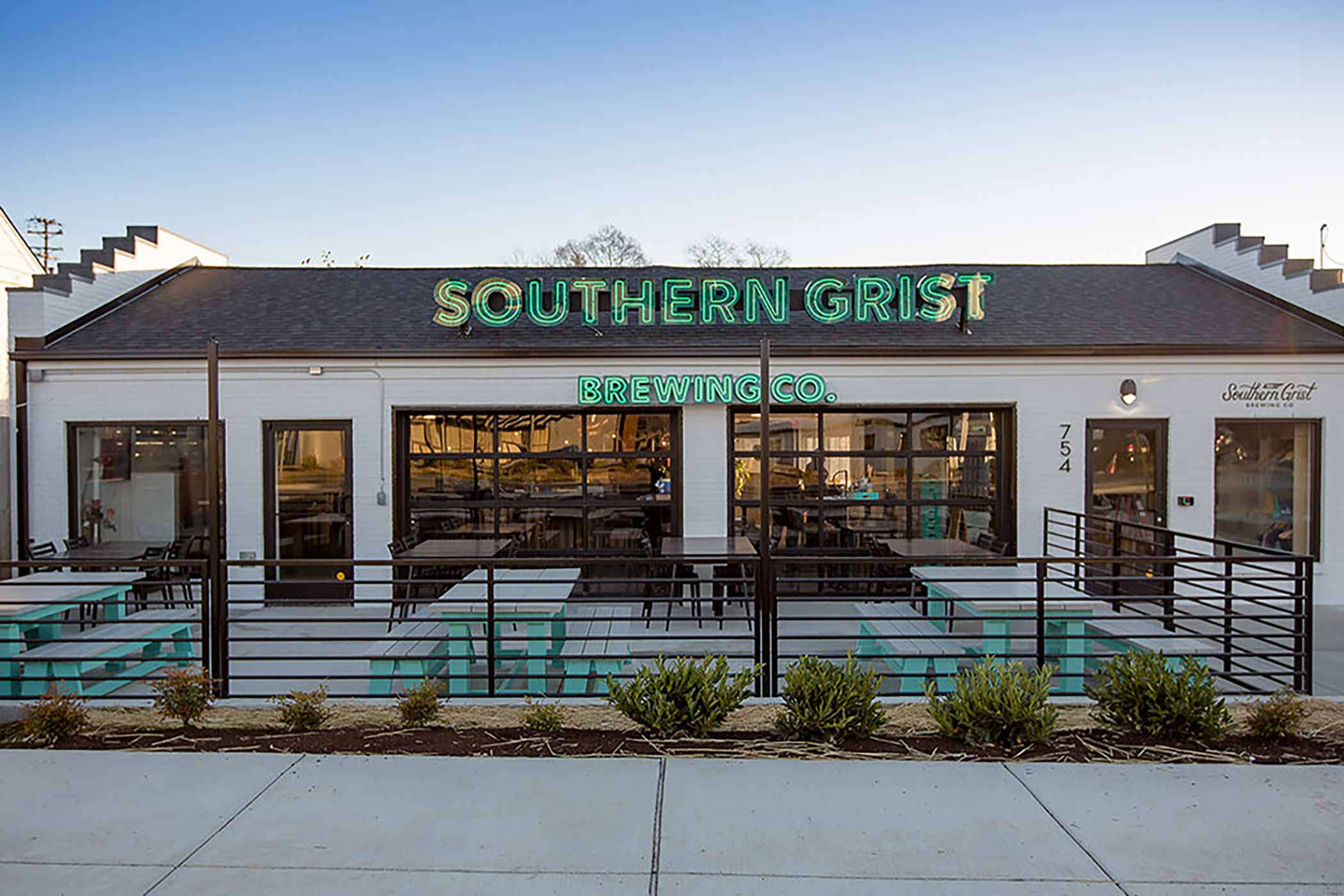Shop
1,067 Beers and 7 Years Later, Southern Grist Is Still One of Nashville’s Best Breweries
????
Nashville Hot Beer!
48 Hours Drinking and Eating in Nashville, TN
The 7 Best Breweries in Nashville, TN
Strength in Unity: Why the Belgian-Inspired Fait La Force Is Nashville’s Hottest Brewery
Seven years ago, Kevin Antoon, Jamie Lee, and Jared Welch opened a little 1,700-square-foot brewery called Southern Grist in East Nashville with just forty-nine seats. Brewing off of four gas burners and spaghetti pots, the trio pumped out off-kilter sours, unfiltered IPAs (yes, we mean hazies), and eventually pastry stouts.
When the brewery first opened in 2016, the beer landscape in Nashville looked very different. Old-guard breweries like Yazoo and Blackstone offered classics like pale ales, porters, and even amber. But the beers Southern Grist started bringing to the bar, well, they’d never been seen before.
Clearly, because when Southern Grist Co-Founder Kevin Antoon recounts serving the brewery’s first hazy IPA, he says half the folks sent the beers back, indicating something was wrong with the beer.
“People thought we were crazy,” he laughs, remembering that the brewery also opened with a fruited sour. “They were like, you guys really think people are going to drink a red beer in Nashville.”
Turns out they did.
Now that fruited sour and hazy IPA are the two beers Southern Grist became known for.
Well, actually, way more than just those two beers at this point.
Over the past seven years, Southern Grist Co-Founder and Head Brewer Jared Welch has made a whopping 1,067 different beers.
And innovation has always been the key.
A part of what is now considered the second wave of beer in Nashville, Southern Grist made its mark by sticking to its guns, brewing whatever the f**k it wanted.
Southern Grist Threw All the Rules Out the Window
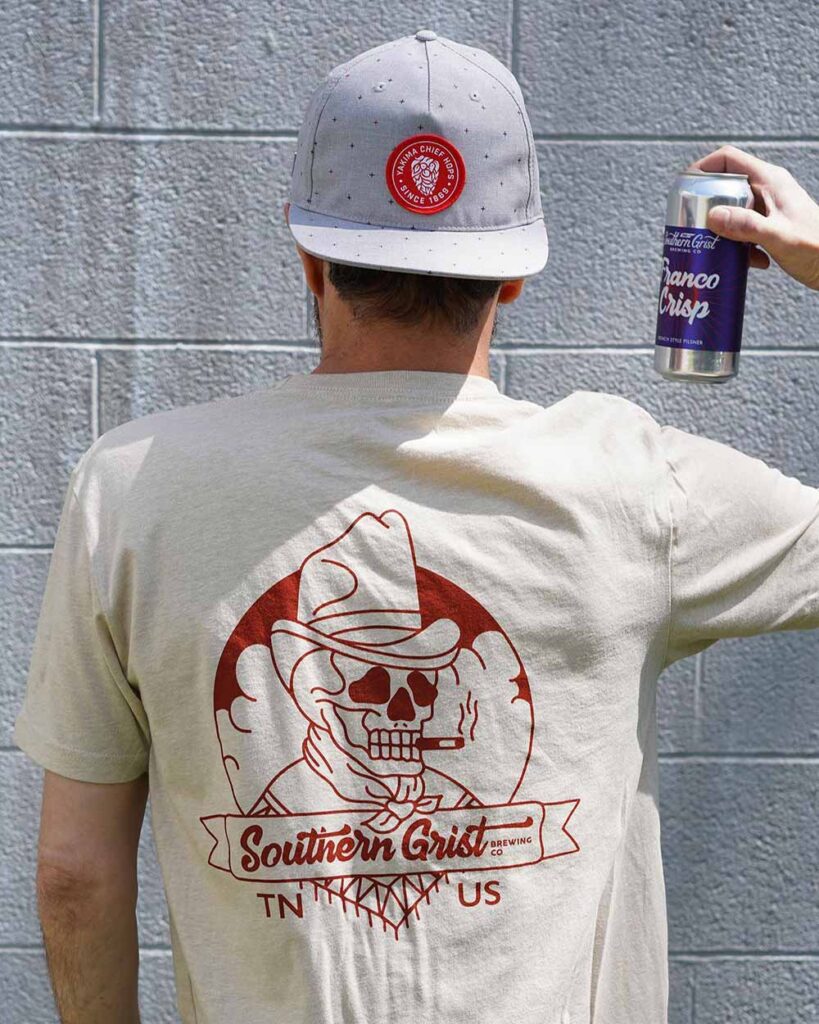
Photography courtesy of Southern Grist Brewing Company
People quickly got on board with Southern Grist’s punch-you-in-the-mouth, rage-against-the-machine approach.
How quickly?
The trio planned to measure success the first year by whether they sold 1,000 beers a month (so 12,000 yearly, for all you nerds out there) because that meant they could keep the lights on.
Perhaps ironically, a light bulb went off in his head when, as Antoon says, “We sold 1,000 beers the first Saturday we were open.”
Antoon laughs as he remembers thinking, “Can I quit my job now!?”
That first year, Southern Grist sold 125,000 beers!
All the rules the brewery set down for themselves in year one eventually went out the door.
“I’m super freaking proud of what we’ve done over the last seven years,” says Antoon. “I realized that most of our change was getting out of our own way. When we opened, we said we’d never do a flagship. We have three flagships now. We won’t do lagers. We have a whole lager program now. We’ll never distribute. We’re in twenty-one states. So we ripped up our business plan, and now it’s all about … adaptation.”
Every step of the way, Southern Grist threw out the playbook.
125,000 Beers and One Year Later, Southern Grist Opened Nations Taproom
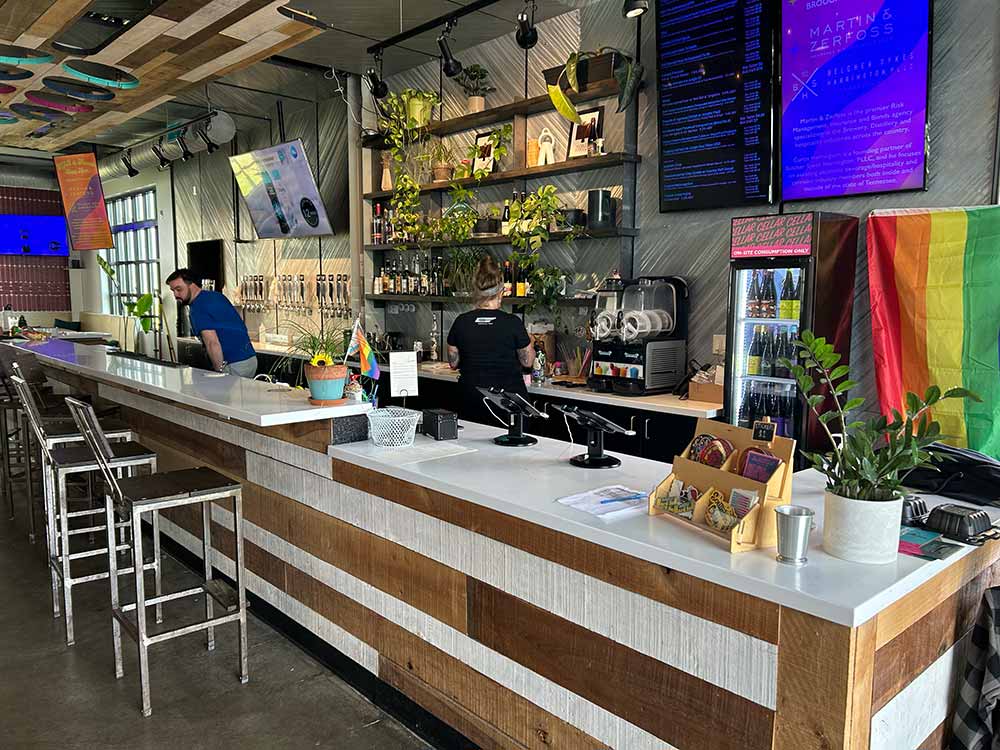
Southern Grist Brewing Company Nations Taprooms | Photography courtesy of Southern Grist Brewing Company
In what we’ve come to understand as true Southern Grist form, the brewery quickly exceeded expectations after that first year.
Welch said he wanted Southern Grist to have a real brewhouse in year five. By year two, the brewery opened its 9,000-square-foot Nations taproom in West Nashville.
And last year, Southern Grist relocated its East Nashville taproom to a space twice the size of its original Porter Road building.
Located in an old auto shop, the new location proved to be too good of an opportunity for Antoon to pass up.
By happenstance, Antoon met the owner of their current building in a parking lot. “He said I got a building for you. … 754 Douglas,” says Antoon. “I drove by it right from the parking lot, and it was a cinder block building with two sh***y garage doors. … And I remember standing there going, man, I’m going to show this to my co-founders, and they’re going to laugh, but I think we can knock this one out of the park.”
Antoon put in an offer the next day.
Southern Grist took that empty shell (an old auto shop, Antoon thinks) and turned it into a beautiful, gleaming new taproom with plenty of room to brew.
“We loved that old location … but we grew up, and we couldn’t be in a closet brewing anymore,” says Antoon, admitting scaling up initially scared him.
“We were making some of the best beer in the state, and I didn’t want to f**k with that,” he says. “But Jared is a freaking genius; he didn’t skip a beat. Every beer tasted the same from system to system. We didn’t throw anything away. His first test batch was one of our best beers.”
Southern Grist Made 1,000+ Beers in 7 Years
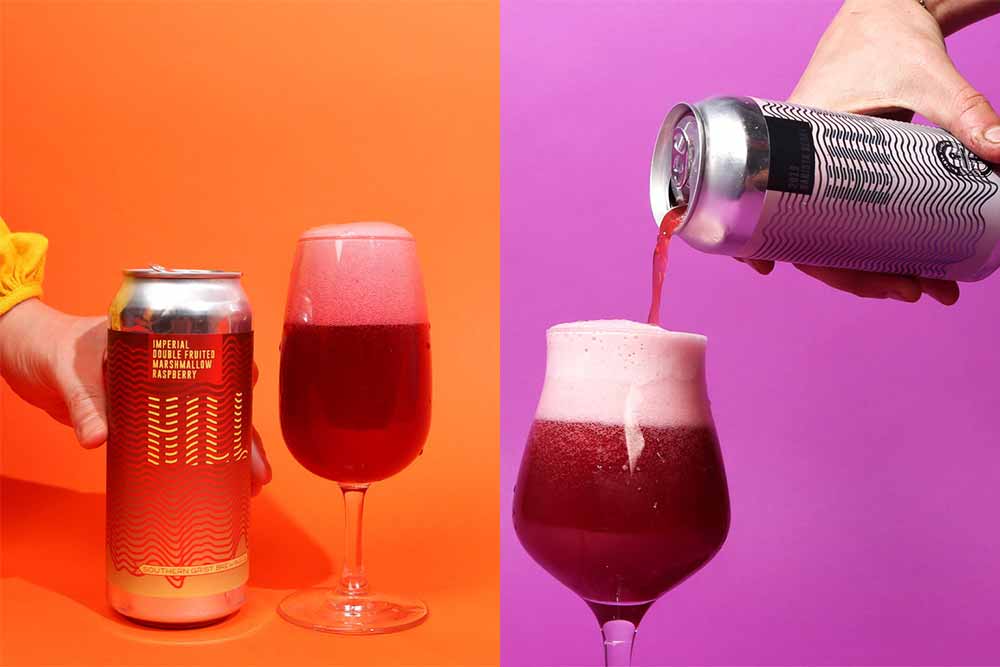
Photography courtesy of John A. Paradiso
Beer made Southern Grist different.
In a sea of old-school pales, brown ales, amber ales, stouts, and porters, Southern Grist made crazy fruited sours, adjunct pastry stouts, and IPAs with haze.
“I remember we were the first ones to make a hazy IPA in Nashville,” says Antoon, admitting he even asked if the beer should look like that. “Half the beers were sent back because they were like, hey, something’s wrong with my beer. No, it’s supposed to be hazy.”
And when the brewery opened with a fruited sour? Antoon says, “People thought we were crazy,” and that no one would ever drink a red beer.
But the three co-founders intentionally baked ingenuity into the brewery’s DNA.
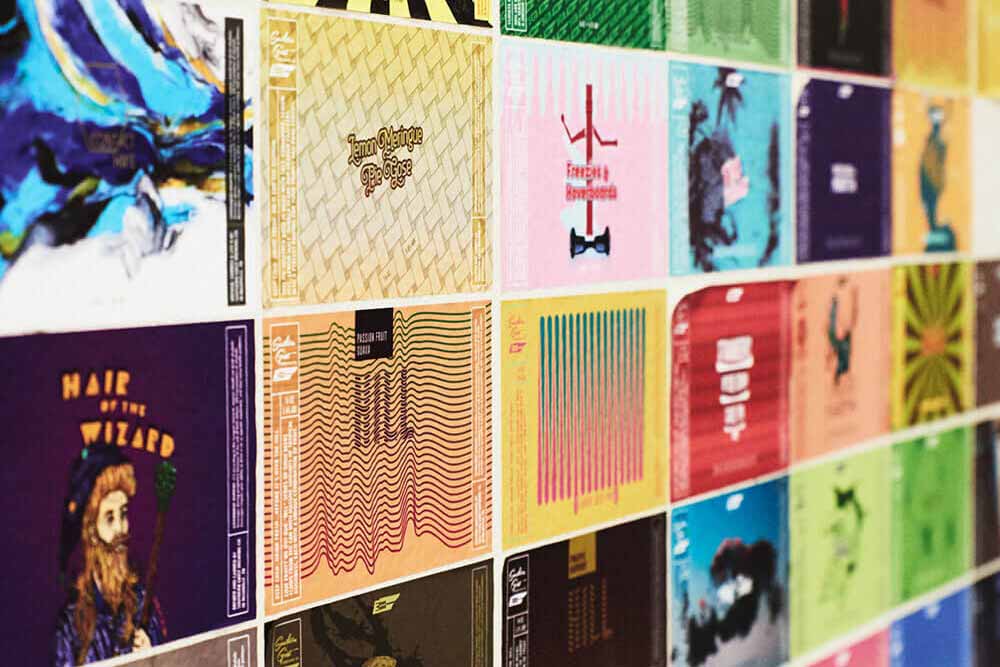
Photography courtesy of Southern Grist Brewing Company
Southern Grist’s Director of Marketing, Jessica Gonzalez, who worked at Funky Buddha before joining the brewery as a taproom lead and working her way up, calls it good ol’ fashion Southern hospitality.
“We have this dedication to quality, not skimping out because it’s a cheaper option, but just making sure that the product, when it comes to beer, when it comes to food, is all really good quality, creativity, and always pushing the envelope on what people think you can do with beer,” she says.
Antoon has another name for it: relentless innovation.
“We can’t shut it off,” he says. “But to make over 1,000 beers in seven years … is just crazy. … There’s a lot of thought put into it.”
For instance, Welch says he’s most proud of a beer we made in collaboration with a local sake brewery called Proper Sake. A hybrid lager-sake beer, Kongou (the canned version) and Kumori (the bottled version) included koji, a culture used in sake-making, and yeast from a local lab called Bootleg Biology.
“We created a hybridized blend of our two strains and pitched it into the beer,” says Welch.
Southern Grist canned this version, then took a small portion of it and blended some of it with lees from Proper Sake’s actual sake production into the brite tank, bottling it for an even more unique experience.
“Having those two beers next to each other was phenomenal,” says Welch. “It was one of the most fun projects I’ve done … and anybody who is around or knows of Southern Grist and the beers we were producing … still talks about it.”
Welch says people continually ask him if he will ever make those beers again. “My response is no because I just don’t have faith that I can replicate it because it was so perfect,” he says.
More recently, Welch says he’s super proud of the brewery’s expanding lager program.
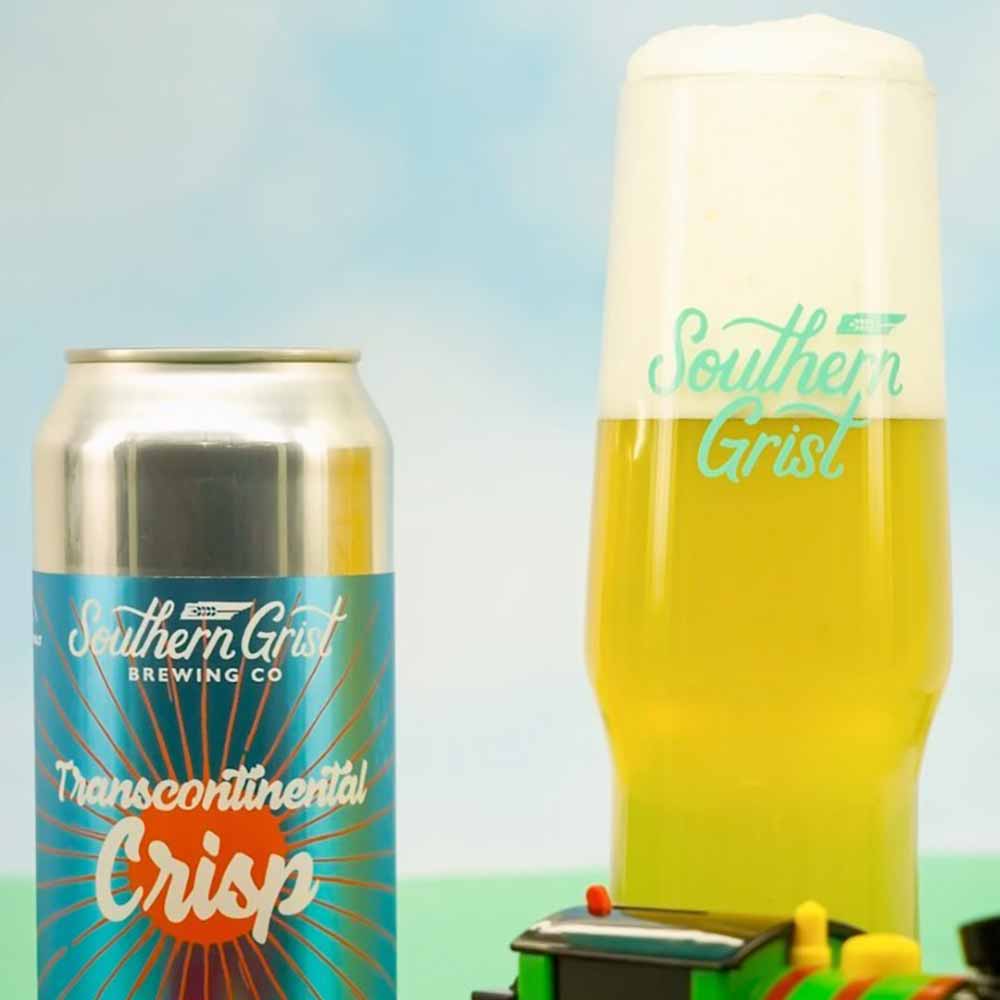
Photography courtesy of @southerngristbrewing
Starting with its first large-scale lager Southern Crisp, Southern Grist launched its lager program to coincide with the brewery’s fourth anniversary in early 2020.
Now considered a flagship, Southern Crisp is an American-style pilsner but with New Zealand hops. “We’re always looking for cool ingredients—heirloom-style malt varieties, new hop products—to have fun with our lager program the way we have fun with all our other beers,” says Welch. “We hit the ground running and have been improving and putting out some real quality lagers.”
Such as Transcontinental Crisp (all lagers in their program come with the name “Crisp” in the title), an unfiltered pilsner-style lager with Canada Malting EuroPils Malt and hopped with Michigan-grown Zuper Saazer.
We named this beer one of our “Top 11 Beers We Drank in May” for its light touch of toasted character that drank easily with a pleasant floral finish.
And you’ll find that same approach to innovation in the food.
Southern Grist Also Said They’d Never Open a Restaurant
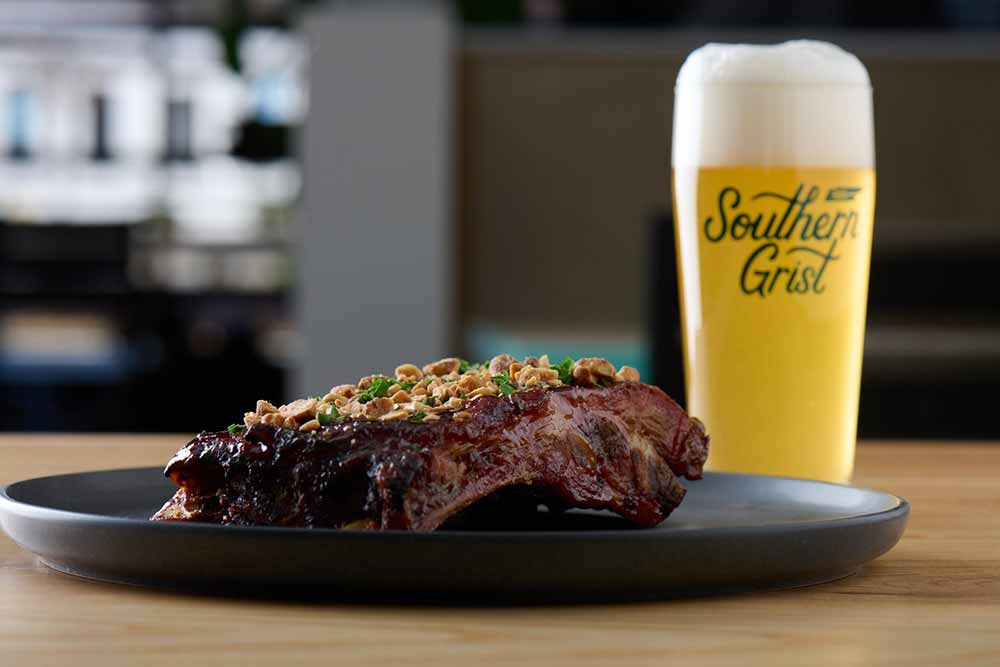
Photography courtesy of Southern Grist Brewing Company
“We said we’d never own a restaurant, and now we own a restaurant,” says Antoon, who found a fantastic chef who makes some of the best food in the city to open the brewery’s food concept, Lauter.
Executive Chef Andrew Coins and Chef de Cuisine Kenji Nakagawa craft beer-drinking food, some with a Japanese twist, a nod to Nakagawa’s background. All paired to go with Southern Grist’s beers. For instance, Coins and Nakagawa barrel-age pecans for a salad (yes, a salad) in one of the brewery’s stouts and braise chicken with Southern Crisp lager.
You’ll also find bao buns and fried chicken that’s not Nashville hot chicken but a version marinated in koji.
“We have born-and-raised Nashville folks come in asking, ‘What’s a bao?’” says Antoon. “We’re just like, try it, put it in your mouth. So we’re converting [people] just like we did with craft beer.”
Opening up a food concept has allowed Southern Grist to diversify its consumer base.
“It gave us the opportunity to expand our reach a little bit,” says Gonzalez. “We were able to reach out to different clientele. People who had never heard of us before came in for this food, which allowed us to have a seat for everybody at the table.”
Because it has been loyal fans that have helped Southern Grist grow over the last seven years.
Loyal Fans of Grist Membership Club
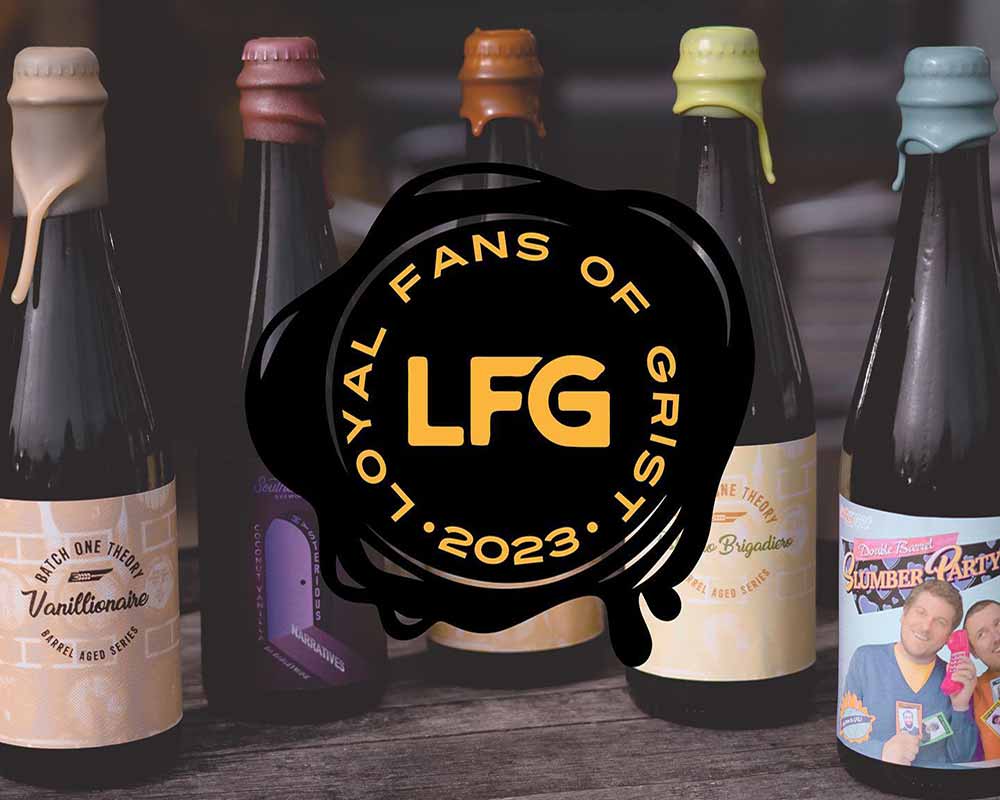
Photography courtesy of Southern Grist Brewing Company
This past January, Southern Grist started its bottle society, Loyal Fans of Grist (LFG), for the first time.
“When I started here, we had people wrapped around the building standing in line for bottles,” says Gonzalez, who has taken the reins on running the brewery’s membership club. “Everyone wished we had a club so they could guarantee to get a bottle; we heard this for years and years.”
With plenty of exciting barrel-aged beers on the horizon, Gonzalez says now seemed the perfect time to “thank everybody that’s been with us through all of the years.”
Five months in, the club has received great feedback. In addition to receiving six 500ml bottles never before released to the public, members also get dibs on future bottle releases (such as Batch One Theory) and access to exclusive events and parties.
“People are saying this is the best bottle club they’ve ever joined,” says Antoon.
LFG may be the cherry on top of the ever-growing frosted raspberry marshmallow sundae at Southern Grist.
No Longer the New Kids on the Block, Now the Cool Ones
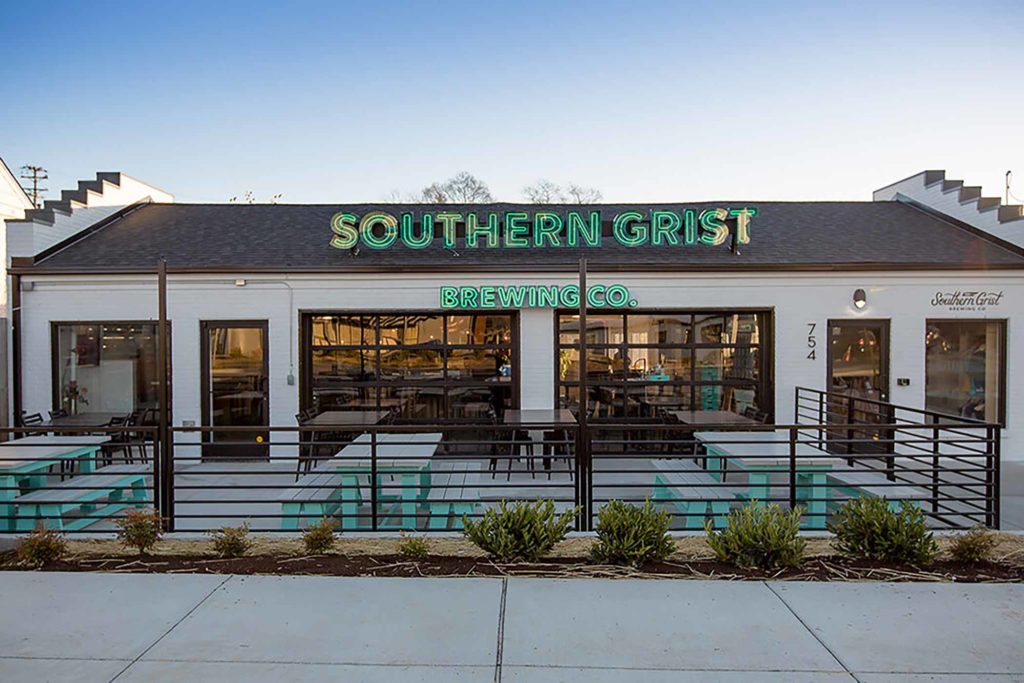
Photography courtesy of Southern Grist Brewing Company
Trendsetters, revolutionaries, boundary breakers—however you want to describe Southern Grist, Antoon never thought it would be as the “cool kids.”
He remembers going to J. Wakefield with Lee and Welch about six months after they first opened. “This group walks by us, and it was Other Half and Evil Twin,” says Antoon. “I was like, one day, we’re going to have a beer with the guys from Other Half.”
Fast forward seven years, Other Half’s General Manager Geriz Ramirez called up Antoon to ask if he could stay at his house. “We went from, ‘one day we’ll have a beer with them,’ to now we’re hosting them for dinner,” laughs Antoon. “Last night, when Geriz left, he got super emotional, saying we’ve come so far in seven years. That was really cool.”
Now the cool kids on the block, Southern Grist only have plans to continue to grow.
Although just pipedreams now, Antoon says Southern Grist would love to open up a destination brewer a la Jester King or Blackberry Farms.
He also threw out Chattanooga as an up-and-coming town that would be great for another Southern Grist taproom.
And outside of beer, explorations into bourbon blending are at the forefront of all three co-founders’ minds.
Regardless of where Southern Grist goes from here, ingenuity will continue to drive them forward—zagging where everyone else zigs has always been in Southern Grist’s bones.
When you’re looking for a true taste of Nashville from the last seven years and for the next probably seventy years to come, there is no better brewery than Southern Grist.
All we can say is here’s to 1,000+ more beers you can look forward to drinking in the future.

